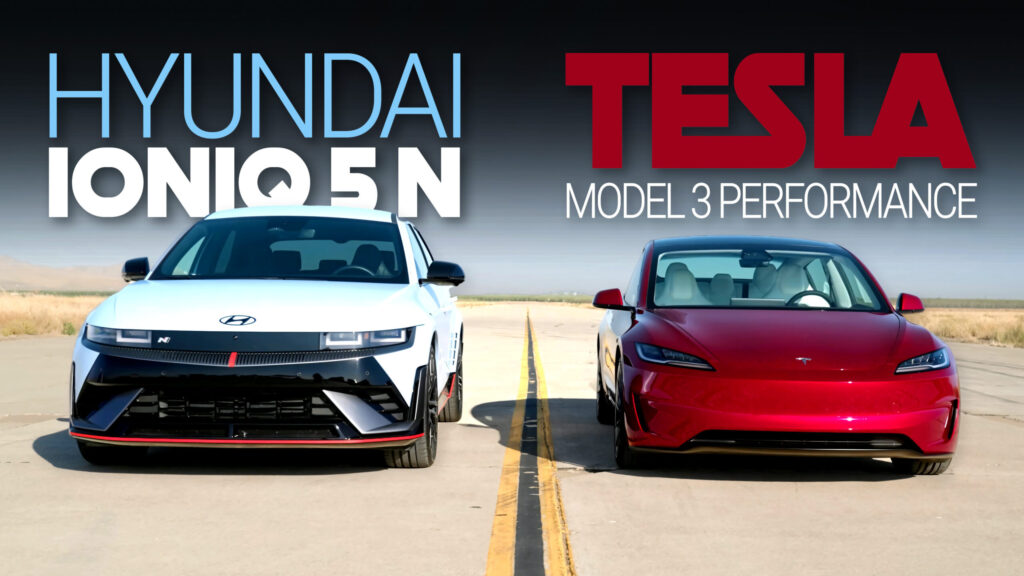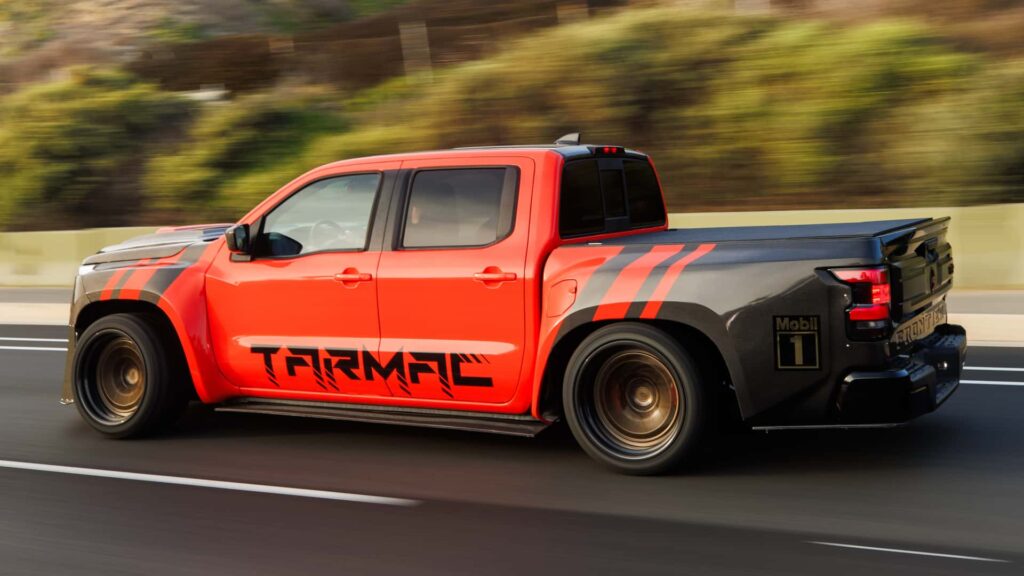On paper, the Hyundai Ioniq 5 N boasts more power than the new Tesla Model 3 Performance, but it’s also noticeably heavier
December 28, 2024 at 21:01
- Tested in a U-turn drag race, the two EVs showed they were almost perfectly matched.
- The Tesla Model 3 accelerates faster, but the Hyundai Ioniq 5 N brakes more effectively.
- In a head-to-head EV battle, tight finishes prove the gap between rivals is shrinking.
The Tesla Model 3 Performance Hyundai Ioniq 5 N may not be direct rivals, given one is a sedan while the other is a crossover, but there’s no denying they are two of the most talked-about performance EVs currently on the market. Both offer blistering straight-line performance and impressive handling, but which is the best?
To give us an idea of the individual strengths and weaknesses of the Tesla and the Hyundai, Edmunds pitted them against each other for its U-Drag Race test. This consists of a quarter-mile sprint, a high-speed U-turn to test out the car’s cornering abilities, and a sprint back down the runway. The duo were very evenly matched and showed there are different ways to achieve extreme levels of EV performance.
Watch: C8 Corvette Z06 Battles Mercedes-AMG GT 63 in U-Drag Duel
The first test is extremely close. Off the line, the Tesla has the advantage and edges in front of the Hyundai. However, under braking, the Ioniq 5 N closes in and is able to take the U-turn tighter and quicker, allowing the driver to get back on the throttle faster than the driver of the Model 3 could. This gives the Ioniq 5 N an advantage on the sprint back home and it eventually finishes ahead of its American rival by less than a car length.
Interestingly, the Hyundai got the better launch in the second race, and this time, the driver of the Tesla took the U-turn slightly tighter, making up a little bit of time. Heading to the finish line, the Hyundai pulled ahead, taking its second victory.
A look at the figures shows the Tesla recorded the best 0-60 mph (0-96 km/h) time at 3.1 seconds compared to the 3.3 second time of the Ioniq 5 N. The Tesla also set the quickest quarter-mile at 11.0 seconds, whereas the Hyundai needed 11.2 seconds. However, it was the Korean that pulled the highest G in cornering and finished the U-turn drag race in 32.8 seconds compared to the 33.0 second time of its rival.
The reviewers note the Tesla makes it much easier to set up as drivers simply need to switch it to Track mode. By comparison, the Hyundai has a dizzying array of settings and customization options, meaning you need to dive into the menus to achieve the best performance.
Watch: Lamborghini Revuelto Vs McLaren 765LT Drag Race Is A Riot
It is, however, worth adding that some commentators point out that the reviewers misunderstood the Track mode as being the optimal for a drag race, which isn’t the case with the Model 3 Performance. That’s because it slows down the launch a bit and uses more energy to cool the battery so it doesn’t overheat when lapping a circuit.
According to Tesla, the Insane mode pre-heats the battery and “provides the maximum level of acceleration immediately available”, so for a quick sprint, such as the one required in a drag race that’s over in seconds, it’s preferable. Track mode, on the other hand, is designed “to modify the stability control, traction control, regenerative braking, and cooling systems to increase performance and handling while driving on closed circuit courses”.
In any case, even in Track mode, the Model 3 had an edge in acceleration over the Ioniq 5 N anyway and lost out in braking and cornering. It would be interesting, though, to see a rematch with the Tesla in Insane mode, which should settle the issue.


